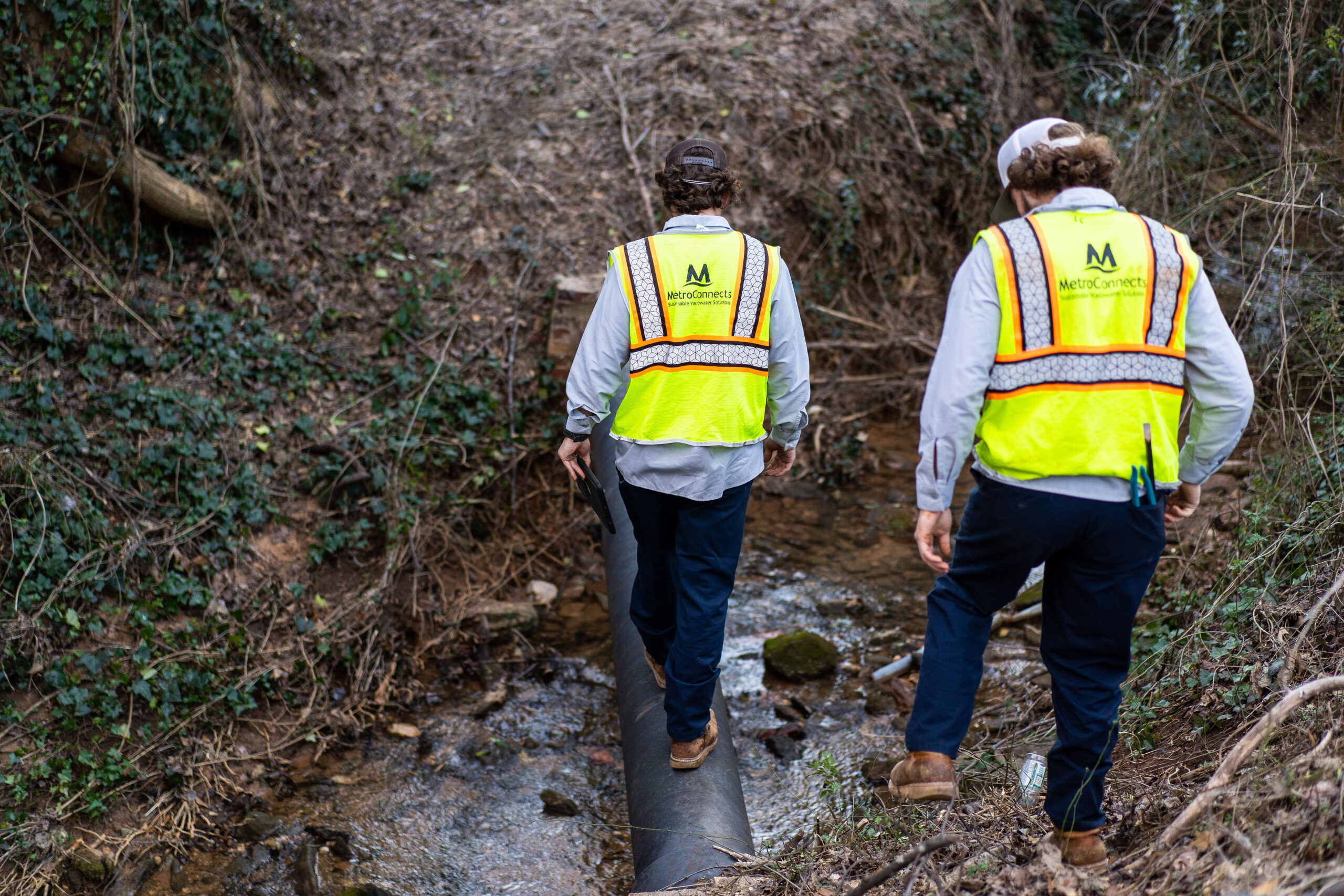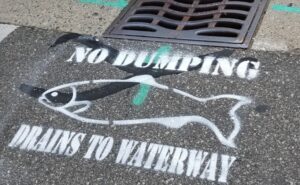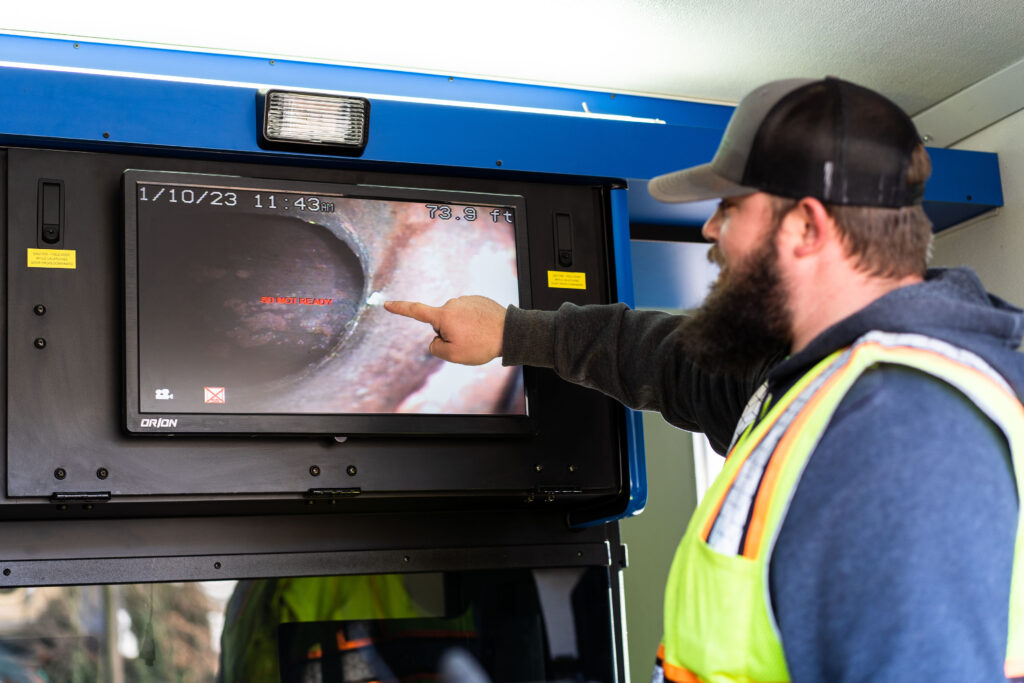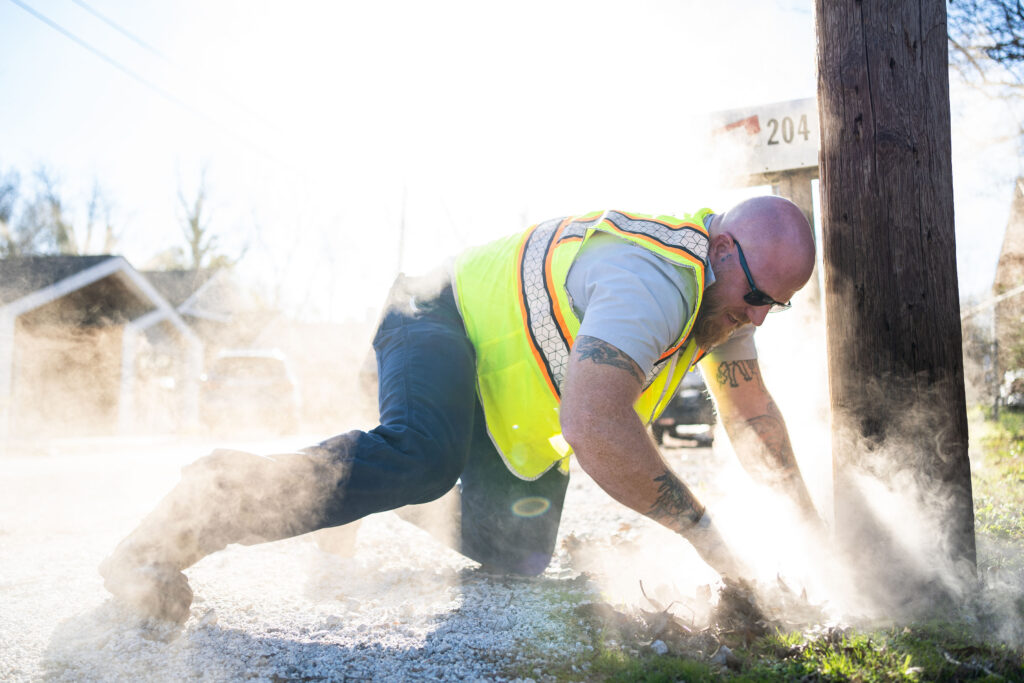- There are three main types of sewer systems: Sanitary, stormwater and combined.
- Sanitary sewer systems handle wastewater, and stormwater sewer systems handle stormwater.
- Wastewater must be cleaned at wastewater treatment facilities before being released back into the environment; stormwater systems move stormwater directly to nearby bodies of water without treatment.

Everything is Connected
Have you ever wondered how your sewer system works? OK, probably not. Perhaps a better question: Do you know why it is important to understand how your sewer works? Because everything is connected! Understanding sewer systems and how they work can help us to better protect our larger environment, including water sources and ecosystems downstream from where we flush.
A Quick Sewer Primer
There are three main types of sewer systems: Sanitary sewers, stormwater sewers and combined sewers. Some households are attached to septic systems, but these systems do not attach to offsite sewer systems.
Sanitary Sewers: Sanitary sewers carry wastewater from homes and businesses to wastewater treatment plants. They consist of pipes or “laterals” that are attached to homes, businesses and other buildings, main sewer lines that transport wastewater from the laterals to wastewater treatment plants (sometimes called water reclamation facilities), pump  stations that help move the sewage through the pipes where gravity doesn’t do the trick, manholes that provide access to the pipes, and finally, the wastewater treatment facilities themselves, where wastewater is cleaned before it is released it back into the environment. The role of sanitary sewer systems is to get that wastewater to treatment plants without any of it leaking from the pipes or overflowing from manholes (what is called a Sanitary Sewer Overflow or SSO). Leaks and SSOs can both contaminate groundwater and nearby water sources. Sanitary sewer systems also must be maintained in order to prevent Inflow and Infiltration (I&I), which occurs when stormwater enters the system through cracks in pipes, illegally attached drainage systems, or leaks in manhole covers. The extra stormwater that enters the system through I&I winds up in the wastewater treatment facility, putting extra (and costly) pressure on the treatment process.
stations that help move the sewage through the pipes where gravity doesn’t do the trick, manholes that provide access to the pipes, and finally, the wastewater treatment facilities themselves, where wastewater is cleaned before it is released it back into the environment. The role of sanitary sewer systems is to get that wastewater to treatment plants without any of it leaking from the pipes or overflowing from manholes (what is called a Sanitary Sewer Overflow or SSO). Leaks and SSOs can both contaminate groundwater and nearby water sources. Sanitary sewer systems also must be maintained in order to prevent Inflow and Infiltration (I&I), which occurs when stormwater enters the system through cracks in pipes, illegally attached drainage systems, or leaks in manhole covers. The extra stormwater that enters the system through I&I winds up in the wastewater treatment facility, putting extra (and costly) pressure on the treatment process.
Stormwater Sewer Systems: There are many types of stormwater sewer systems, but the key to understanding them — and the difference between them and sanitary sewers — is that their job is to safely move stormwater (water from rain, hail, snow, and other precipitation) into a nearby body of water in order to prevent flooding. Stormwater systems can include catch basins, gutters, channels,  pipes and tunnels. Most important to understand is that they do not transport water to a water treatment facility. Instead, the stormwater is guided directly to a water source such as a creek, stream, river, lake or pond, which is often part of a local drinking water system. This is why it is so important to treat stormwater sewer systems and sanitary sewer systems differently. Human waste, pet waste and other contamination should NEVER go into a stormwater drain. Whatever contaminants wind up in a stormwater system will make their way to source water, which can poison fish, birds, and other wildlife, and harm drinking water supplies.
pipes and tunnels. Most important to understand is that they do not transport water to a water treatment facility. Instead, the stormwater is guided directly to a water source such as a creek, stream, river, lake or pond, which is often part of a local drinking water system. This is why it is so important to treat stormwater sewer systems and sanitary sewer systems differently. Human waste, pet waste and other contamination should NEVER go into a stormwater drain. Whatever contaminants wind up in a stormwater system will make their way to source water, which can poison fish, birds, and other wildlife, and harm drinking water supplies.
Combined Systems: Combined systems do just what they say — they combine sewer and stormwater systems into one. These are rarely used anymore, as the excess stormwater that enters sewage treatment facilities is costly to clean. Combined sewer systems also have a harder time handling wet weather events and often result in a Combined Sewer Overflow (something similar to an SSO) that can seriously pollute local environments.
It All Goes Downstream
While it is crucial to keep contaminants out of stormwater and combined sewer systems, it is equally important to keep anything other than “black water” (water contaminated with fecal matter and urine) and “gray” water (water from washing clothes and dishes, for example) out of the sanitary sewer system. Wastewater treatment facilities are designed to treat black and gray water only; harsh chemicals, fertilizers, medicines, oil, and solid waste like wet wipes, for example, can muck up the machinery and make it past the treatment process, creating the need for costly repairs and potentially polluting water sources downstream. Learn more about how to be a good sewer steward here: www.metroconnects.org/strong-sewer-steward. And take a look at the fun sewer steward children’s activities designed by the Sacramento Area Seer District here: www.sacsewer.com/kids-corner.
MetroConnects’ Role

MetroConnects handles an integral part of the sanitary sewer system. We build, maintain, replace and rehabilitate the pipes that carry wastewater from your lateral sewer pipes to the pipes maintained by your local wastewater treatment mains, which are in most cases operated by Renewable Water Resources (ReWa). Our job is to keep your sewer running smoothly. We keep a proactive maintenance schedule, providing root control to prevent invasive roots from damaging pipes, line cleaning to keep debris (including fats, oils, and grease) from blocking pipes, and smoke and dye testing to locate problem spots. We also are hard at work rehabilitating deteriorating sewer pipes and manholes in the Mills Mill and Dunean Mill Villages using a newly awarded $20 million grant from the South Carolina Infrastructure Investment Program. If you are experiencing a backup or other sanitary sewer problems on your property, call MetroConnects at (864) 277-4442 before you call a plumber — if the problem is on our side of the property line, we can help!
